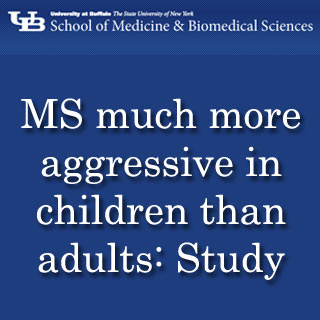
Amusingly, however, patients with pediatric-onset MS may perhaps develop disabilities at a slower pace in contrast to patients with adult-onset MS. In addition, pediatric-onset MS is known to comprise up to 5 percent of total MS cases.
According to The National Multiple Sclerosis Society, nearly 8,000 to 10,000 children which are defined as up to 18 years old in the U.S. have multiple sclerosis. Also, an added 10,000 to 15,000 appear to have suffered from at least one symptom indicative of MS.
The disease is known to cause demyelination. Apparently, demyelination refers to the destruction of the sheath that protects and insulates nerve fibers. More so, it breaks in the myelin sheath and disturbs the flow of electrical impulses thereby causing loss of sensation and coordination.
“Patients with pediatric-onset MS have three times as many relapses annually than patients with adult-onset disease, which suggests there is greater disease activity in this population,†says corresponding author, Bianca Weinstock-Guttman, MD, associate professor of neurology in the UB School of Medicine and Biomedical Sciences.
She continued saying that, “But surprisingly, the average time to reach the secondary progressive phase of the disease is longer in patients who develop MS in childhood than in adult onset MS. Reaching the next stage of disability is almost 10 years longer in pediatric-onset patients.â€
For the purpose of the study, the authors were believed to have examined four sets of patients. In these four sets, the first group included 17 children with an average age of 13.7 who were diagnosed with MS 2.7 years before. Whereas the second group contained 33 adults with an average age of 36.5 years who were diagnosed with pediatric MS about 20 years earlier. The third group comprised 81 adults with an average age of 40 who have had MS for an average of 2.6 years while the last group was made up of 300 adults with an average age of 50.5 who’ve had MS for 20 years.
During the study, all participants were noted to have undergone a brain MRI scan at facilities at Buffalo General Hospital (BGH) and at Women and Children’s Hospital. Whereas the specific MRI metric analysis appear to have been performed at the Buffalo Neuroimaging Analysis Center (BNAC), part of the UB Department of Neurology/Jacobs Neurological Institute, located in BGH.
Apparently, the MRI measured two types of brain tissue damage namely T1-lesion volume and T2-lesion volume. T1-lesion volume is known to show ‘black holes,’ or hypointense lesions, which are areas of permanent axonal damage and T2_lesion volume shows the total number of lesions i.e. lesion load and overall disease burden.
First author of the study and UB assistant professor of neurology and co-director in the Pediatric Multiple Sclerosis Center Eluen A. Yeh MD., said that both of these measures could possibly signify that MS is more aggressive in children in the early stages.
Yeh further said that, “This corresponds with recent data that suggest a higher lesion burden in pediatric MS than adult-onset MS. These findings are somewhat surprising, considering we have assumed that children generally have a greater capacity for central nervous tissue repair.â€
The findings of this study seem to be limited to a cross-sectional study design. However, the findings suggest that children have a fairly better reserve and functional adaptability as compared to adults but less support for an improved remyelination process. Nonetheless, the remyelination process may perhaps require a more in-depth prospective analysis. Moreover, the data seems to support the need for early diagnosis and therapeutic intervention in pediatric MS patients.
The findings of the study have been published in the journal, Brain.
